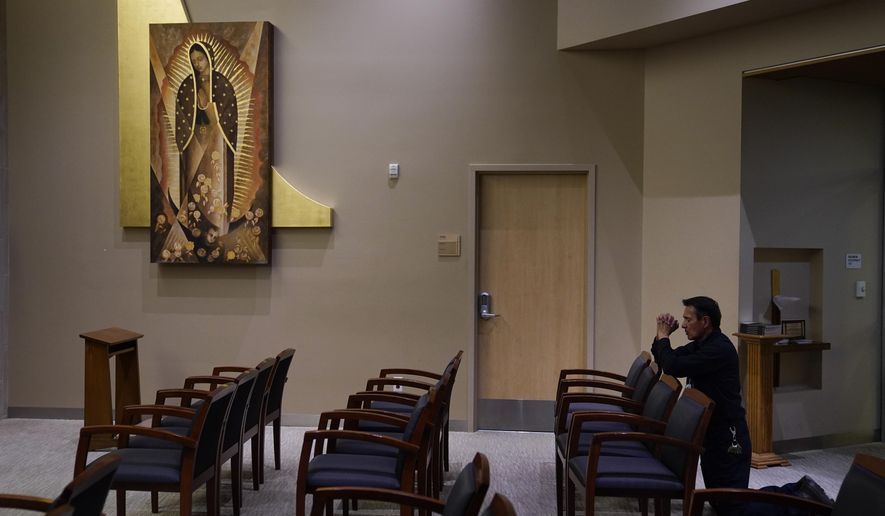Federal officials late Wednesday scrambled to bless an Oklahoma hospital chapel’s candle after issuing a warning letter cursing its light and threatening a cutoff of Medicare and Medicaid funding.
In a statement to The Washington Times, a spokesperson for the Centers for Medicare & Medicaid Services said the agency “is working with the hospital’s accrediting organization to develop options to mitigate the potential fire risk and remove the safety finding.”
On April 20, a CMS official ordered the St. Francis Health System to extinguish a glass-encased candle at its 96-bed hospital in south Tulsa or lose its accreditation from the Joint Commission, an independent agency.
Public Health Service Capt. Scott J. Cooper said the flame is a hazard, citing an inspection report about the “open, unsupervised flame” from the Joint Commission, a hospital accrediting body.
He denied a waiver request from St. Francis Health System to permit the chapel candle.
Without the commission’s endorsement, the entire Health System risked losing eligibility for federal payments, advocates said.
The earlier CMS letter was adamant about enforcing a requirement that open flames in hospitals be “supervised at all times.”
The candle, which represents the presence of Christ, has burned continuously in the chapel for 63 years with the approval of local fire officials.
“In requiring Saint Francis to extinguish its flame, you are trying to extinguish not just a candle, but the First Amendment rights of Saint Francis Health System, as well as vital healthcare for the elderly, poor, and disabled in Oklahoma,” attorney Lori Windham of the Becket Fund for Religious Liberty said May 2 in a letter to Health and Human Services Secretary Xavier Becerra, CMS Administrator Chiquita Brooks-LaSure and other officials.
A loss of accreditation and funding “would abruptly and immediately jeopardize its services to the elderly, disabled, and low-income patients” who rely on the federal funds, said Ms. Widham, whose nonprofit legal group is representing the hospital.
The attorney said the St. Francis Health System provides about 11,000 jobs and cares for more than 400,000 patients in its five eastern Oklahoma hospitals.
The church’s rules require “a special lamp, fueled by oil or wax, should shine prominently to indicate the presence of Christ and honor it,” and that the use of “so-called electric vigil lights” is prohibited under guidelines issued by the U.S. Conference of Catholic Bishops.
Advocates say the chapel candle is far from medical equipment and patients and shielded by two glass holders. It stands in a brass basin attached to a wall.
A Joint Commission surveyor visited the hospital Feb. 21, expressly asked to see the chapel candle and cited it as a “moderate” safety risk, hospital attorneys said.
A spokesperson for the Joint Commission did not immediately respond to a request for comment.
Barry Steichen, executive vice president and chief operating officer of St. Francis, said the hospital is “being asked to choose between serving those in need and worshipping God in the chapel, but they go hand in hand.”
Ms. Windham said the candle-dousing order “is a blatant violation” of the 1993 federal Religious Freedom Restoration Act and the First Amendment.
Sen. James Lankford, Oklahoma Republican, denounced the April 20 CMS determination.
In an email to The Washington Times, he said threatening the hospital’s accreditation for having the chapel candle “violates Oklahomans’ right to religious freedom.
“As Americans, we have a right to have a faith and live that faith. To try to harm a hospital because it is religious and not allowing Tulsans to live their faith — most likely in a moment of need — is an attack on this basic human right,” he said.
• Mark A. Kellner can be reached at mkellner@washingtontimes.com.




Please read our comment policy before commenting.